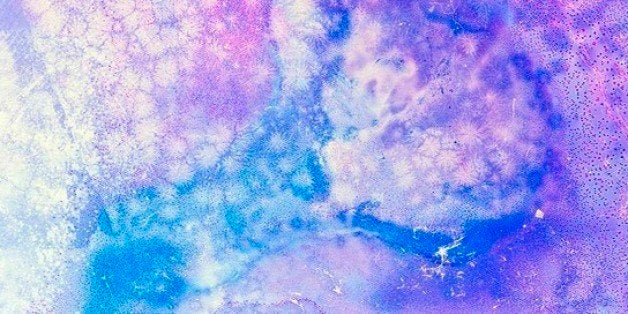
THE SPACE WITHIN from Dark Rye on Vimeo.
Ajay Malghan worries that genetic modification of crops is changing more than the way we eat. It's affecting, he says, the very nature of our humanity. Malghan's not a scientist. He doesn't work in agriculture. But he is a photographer, so he's crafted an artistic response: a series of intricate photographs, which he calls Naturally Modified.
But what could have been a didactic project, ended up turning into something beautiful, mysterious and even occasionally whimsical. Malghan was still studying to be a photographer at the Savannah College of Art and Design when he became inspired to create Naturally Modified, and therefore had access to older technologies that a now mostly digital medium has largely abandoned. A going-out-of-business photo store allowed him to buy light paper and chemicals for dimes on the dollar. At the time, his school still had functioning color darkrooms. Those factors led to some remarkable art.
In an artist's statement, Malghan writes, "Naturally Modified uses light and color as instruments to reveal seemingly infinite layers beneath the surface of our food. By going against the digital norm of the current climate, I venture into new territory by using the old technology of the darkroom."
To create his images, Malghan uses a cameraless technique, deploying an enlarger, not an actual camera, to shine colored light through thin slices of fruits and vegetables onto light-sensitive paper. Instead of a portrait of food, you get a ghostly remnant of something at the cellular level: a mysterious, visionary glimpse into what we're actually putting into our bodies. Some of the subjects are guessable. A close-up of salt crystals actually resembles salt flats. Corn appears as silken strands, and deli meat is flat and veiny.
But other foods have a much odder and unpredictable appearance. A thin slice of carrot looks like a Klimt painting. A cross-section of a strawberry appears almost cosmic in its implications, an exploding star of food. And a banana peel resembles a lonely stretch of tarmac. It's an inspired and unlikely body of work.
Malghan's photography, like our changing food system, is rooted in science. "These images extract the camera and allow us to see the ordinary in new ways," he writes, "while blurring the lines between art and science. As our food is more processed and more steps are introduced between farm and table, the color added becomes ironic, with art imitating life."
In fact, it's miraculous that Malghan is even producing this art at all. As this Dark Rye video tells us, at age 20 he was diagnosed with leukemia, and the resulting treatment gave him a bone disease that led to three hip replacements and multiple other surgeries. His art isn't a direct result of his illnesses, but it does reflect an appreciation for the unknown processes of nature, and for the fragility of life. Altering our physical world has consequences. Malghan's lens shows us how.
This video from Dark Rye was produced by Caitlin Riley and edited by Andy Pickard.